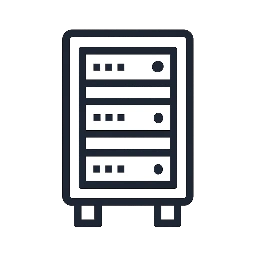In today’s fast-paced digital world, application performance is not just a luxury; it’s a necessity. A slow-loading Laravel application can frustrate users, increase bounce rates, and ultimately hamper your growth potential. Moreover, as your application scales, performance bottlenecks can become more pronounced, leading to increased server costs and poor user experiences. Optimizing Laravel performance is critical to delivering smooth, responsive applications that can handle increasing traffic gracefully. This guide dives deep into practical strategies to optimize Laravel applications, focusing on caching, queues, and database query optimization.
Caching is one of the most effective ways to speed up your Laravel application. Laravel provides multiple layers of caching that target different parts of the application lifecycle:
PHP’s Opcode Cache (e.g., OPcache) compiles PHP scripts into bytecode, storing the compiled version in memory to avoid repeated parsing on each request. This is a server-level optimization and is typically enabled in production environments by default.
You can check if OPcache is enabled by creating a simple PHP file with:
<?php
phpinfo();Look for the OPcache section. Make sure it’s enabled in your php.ini:
opcache.enable=1
opcache.memory_consumption=128
opcache.max_accelerated_files=10000Laravel’s Application Cache stores data objects, query results, or any expensive computations to reduce server load and speed up response times. Laravel supports various drivers like Redis, Memcached, and file cache.
You can cache data using the Cache facade:
use Illuminate\Support\Facades\Cache;
// Cache a database query result for 60 minutes
$users = Cache::remember('users.all', 60, function () {
return DB::table('users')->get();
});This approach reduces repeated database hits for frequently accessed data.
Laravel provides specific commands to cache compiled views and routes, which significantly reduce the runtime overhead.
- View Cache: Compiles Blade templates once and stores them.
php artisan view:cache- Route Cache: Serializes your routes to speed up route registration.
php artisan route:cacheNote: Route caching is most beneficial for applications with many routes, but you must clear and rebuild the cache after modifying routes.
- Full Optimization
Laravel also provides an optimize command to combine these steps (deprecated but replaced with individual commands):
php artisan optimizeIn newer Laravel versions, run these individually:
php artisan config:cache
php artisan route:cache
php artisan view:cache- Enable PHP OPcache on your server.
- Cache data queries or complex computations with
Cache::remember(). - Use
view:cacheandroute:cachecommands in production. - Regularly clear caches during deployment with
cache:clear,view:clear, androute:clear.
Queues allow you to defer time-consuming tasks like sending emails, processing uploads, or generating reports, so they don’t block your user’s requests. By offloading these tasks to background workers, your application stays responsive and scalable.
Let’s create a job that sends a welcome email.
- Create a Job
Run the artisan command:
php artisan make:job SendWelcomeEmailThis generates a job class in app/Jobs/SendWelcomeEmail.php.
- Implement the Job Logic
Edit the job to include email sending logic:
namespace App\Jobs;
use App\Mail\WelcomeEmail;
use Illuminate\Bus\Queueable;
use Illuminate\Contracts\Queue\ShouldQueue;
use Illuminate\Foundation\Bus\Dispatchable;
use Illuminate\Queue\InteractsWithQueue;
use Illuminate\Queue\SerializesModels;
use Mail;
class SendWelcomeEmail implements ShouldQueue
{
use Dispatchable, InteractsWithQueue, Queueable, SerializesModels;
protected $user;
public function __construct($user)
{
$this->user = $user;
}
public function handle()
{
Mail::to($this->user->email)->send(new WelcomeEmail($this->user));
}
}- Dispatch the Job
In your controller or event listener:
use App\Jobs\SendWelcomeEmail;
public function register(Request $request)
{
$user = User::create($request->all());
// Dispatch job to the queue
SendWelcomeEmail::dispatch($user);
return response()->json(['message' => 'User registered successfully.']);
}- Configure Queue Driver
Laravel supports multiple drivers (database, Redis, Beanstalkd, etc.). For basic setups, use the database driver:
- Create a migration for jobs table:
php artisan queue:table
php artisan migrate- Set
.env:
QUEUE_CONNECTION=database- Run the Queue Worker
To start processing queued jobs:
php artisan queue:workFor production, use a process monitor like Supervisor to keep the queue worker running.
This is a classic performance pitfall where your application executes one query to fetch a set of records (N), and then runs an additional query for each record to fetch related data (+1). This leads to excessive database queries and severe performance degradation.
Assume you have Post and Comment models with a one-to-many relationship.
Bad code (N+1 problem):
$posts = App\Models\Post::all();
foreach ($posts as $post) {
// This fires a query per post to get comments
$comments = $post->comments;
echo $post->title . ' has ' . $comments->count() . ' comments.';
}If there are 100 posts, this results in 1 query for posts + 100 queries for comments = 101 queries.
$posts = App\Models\Post::with('comments')->get();
foreach ($posts as $post) {
// Comments are already loaded with a single query
$comments = $post->comments;
echo $post->title . ' has ' . $comments->count() . ' comments.';
}Here, Laravel runs only 2 queries: one for posts and one for all related comments, dramatically reducing database load.
Eager loading can reduce response times from seconds to milliseconds, especially on large datasets, improving Laravel performance and scalability.
- Database Indexing: Ensure your database tables have appropriate indexes on frequently queried columns (e.g., foreign keys, search columns). This can reduce query execution times dramatically.
- Use Laravel Octane: Laravel Octane supercharges your application by serving requests using long-lived workers powered by Swoole or RoadRunner. This eliminates PHP’s usual bootstrapping overhead and improves throughput.
composer require laravel/octane
php artisan octane:install
php artisan octane:start- Optimize Composer Autoload: Use optimized class loading in production:
composer install --optimize-autoloader --no-dev- Minimize Middleware and Service Providers: Disable or defer loading of unnecessary middleware or service providers.
Optimizing Laravel applications requires a multi-faceted approach:
- Leverage caching strategies like opcode cache, application cache, and route/view caching.
- Offload long-running tasks using Laravel queues to keep your application responsive.
- Avoid the N+1 query problem by using eager loading with the
with()method. - Complement these strategies with database indexing, Laravel Octane, and optimized autoloading.
Always profile your application using tools like Laravel Telescope, Debugbar, or external APM services to identify bottlenecks. Performance tuning is an ongoing process — mastering these techniques will empower you to build fast, scalable Laravel applications that delight your users.
Happy optimizing!

Leave a Reply